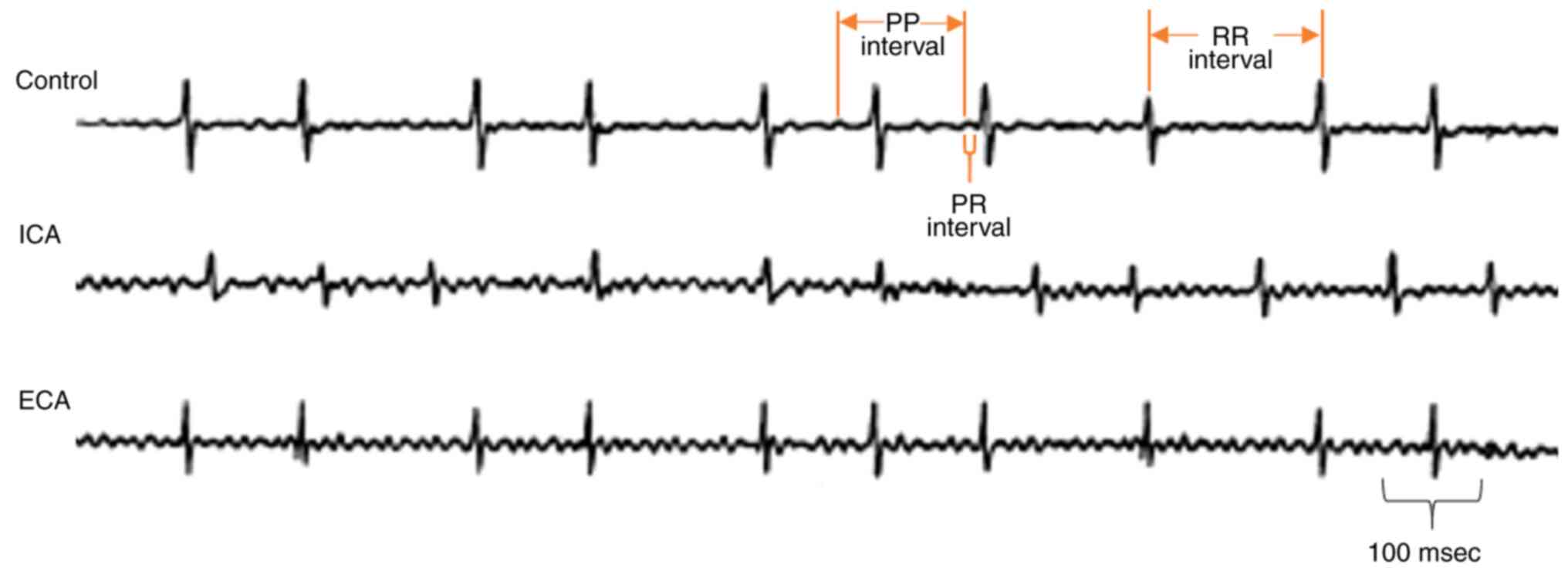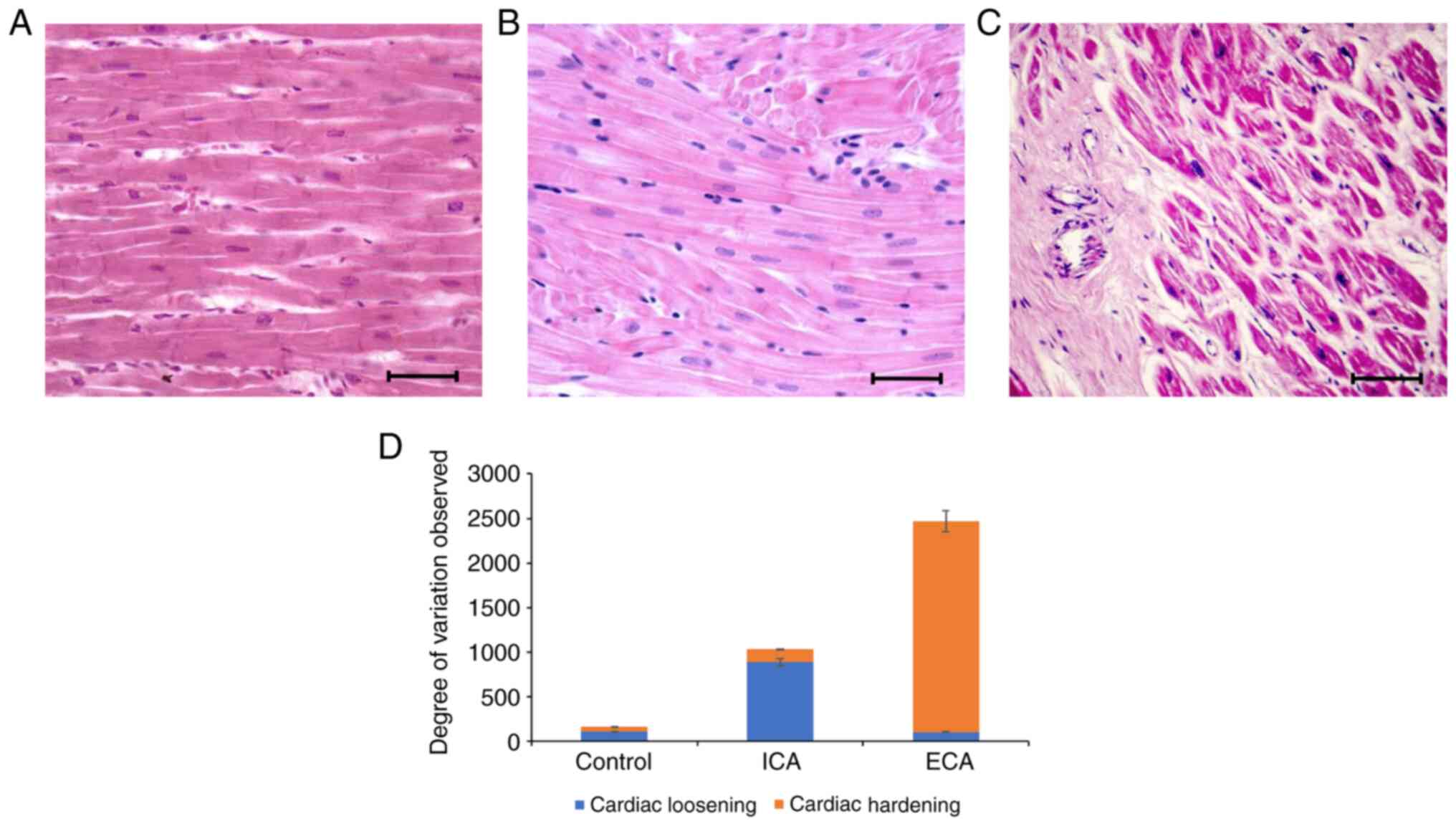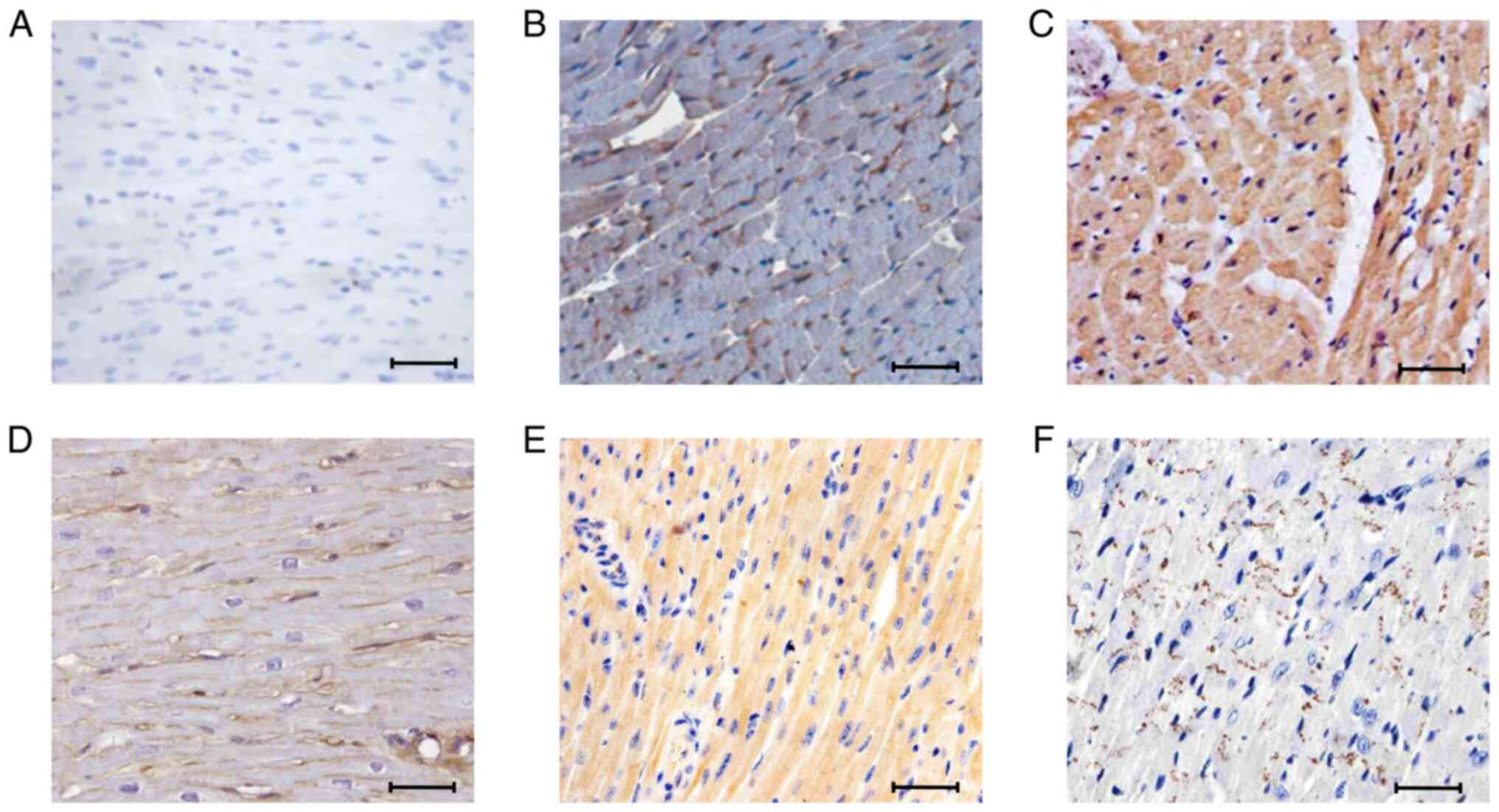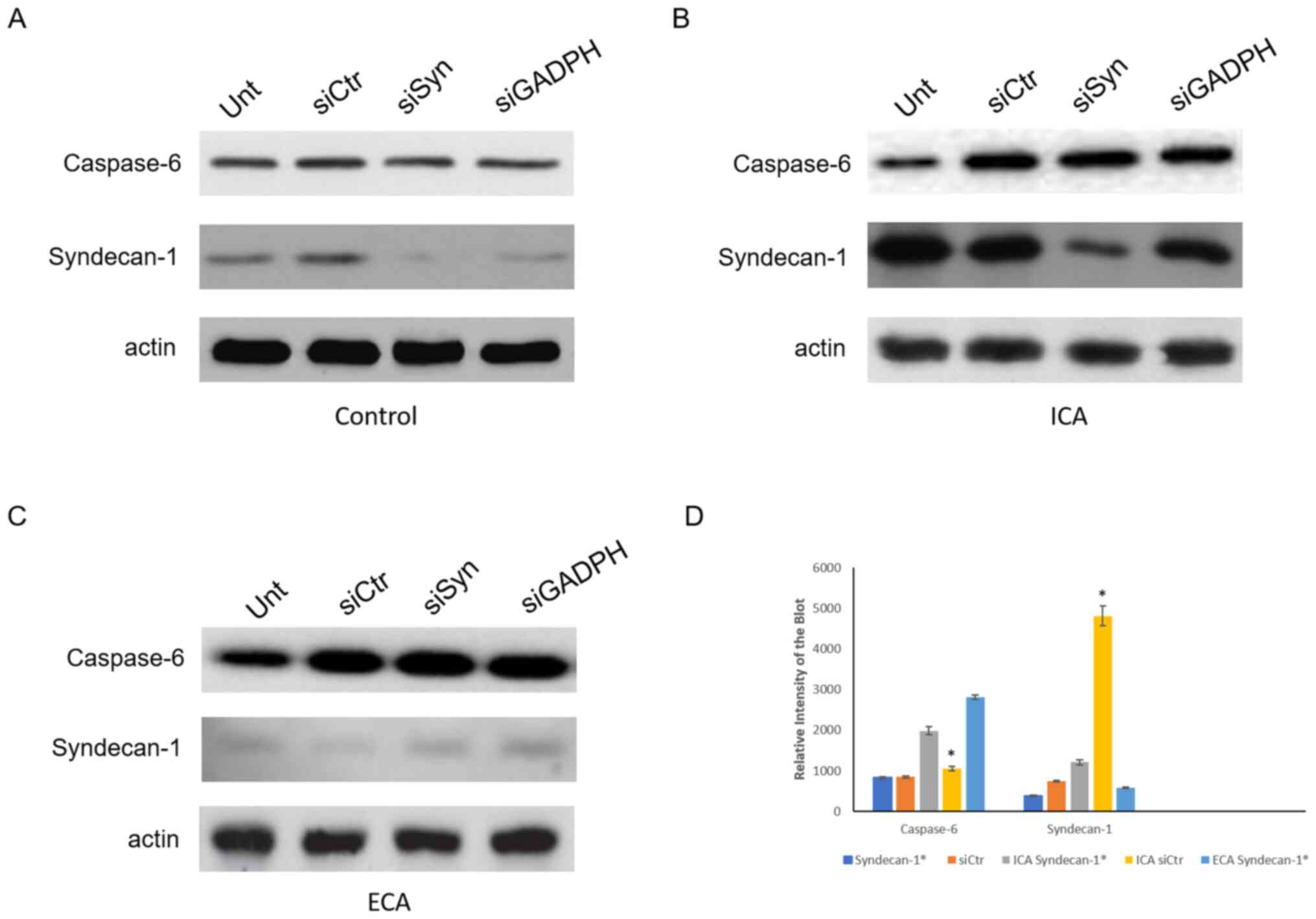|
1
|
Chugh SS, Roth GA, Gillum RF and Mensah
GA: Global burden of atrial fibrillation in developed and
developing nations. Glob Heart. 9:113–119. 2014.PubMed/NCBI View Article : Google Scholar
|
|
2
|
Khurshid S, Choi SH, Weng LC, Wang EY,
Trinquart L, Benjamin EJ, Ellinor PT and Lubitz SA: Frequency of
cardiac rhythm abnormalities in a half million adults. Circ
Arrhythm Electrophysiol. 11(e006273)2018.PubMed/NCBI View Article : Google Scholar
|
|
3
|
Rietbrock S, Heeley E, Plumb J and van
Staa T: Chronic atrial fibrillation: Incidence, prevalence, and
prediction of stroke using the Congestive heart failure,
Hypertension, Age> 75, Diabetes mellitus, and prior Stroke or
transient ischemic attack (CHADS2) risk stratification scheme. Am
Heart J. 156:57–64. 2008.PubMed/NCBI View Article : Google Scholar
|
|
4
|
Abrich VA, Narichania AD, Love WT, Lanza
LA, Shen WK and Sorajja D: Left atrial appendage exclusion during
mitral valve surgery and stroke in atrial fibrillation. J Interv
Card Electrophysiol. 53:285–292. 2018.PubMed/NCBI View Article : Google Scholar
|
|
5
|
Wiseman T and Betihavas V: The association
between unexplained falls and cardiac arrhythmias: A scoping
literature review. Aust Crit Care. 32:434–441. 2019.PubMed/NCBI View Article : Google Scholar
|
|
6
|
Zhang Y, Du W and Yang B: Long non-coding
RNAs as new regulators of cardiac electrophysiology and
arrhythmias: Molecular mechanisms, therapeutic implications and
challenges. Pharmacol Ther. 203(107389)2019.PubMed/NCBI View Article : Google Scholar
|
|
7
|
Sinner MF, Tucker NR, Lunetta KL, Ozaki K,
Smith JG, Trompet S, Bis JC, Lin H, Chung MK, Nielsen JB, et al:
Integrating genetic, transcriptional, and functional analyses to
identify 5 novel genes for atrial fibrillation. Circulation.
130:1225–1235. 2014.PubMed/NCBI View Article : Google Scholar
|
|
8
|
Schellings MW, Vanhoutte D, van Almen GC,
Swinnen M, Leenders JJ, Kubben N, van Leeuwen RE, Hofstra L,
Heymans S and Pinto YM: Syndecan-1 amplifies angiotensin II-induced
cardiac fibrosis. Hypertension. 55:249–256. 2010.PubMed/NCBI View Article : Google Scholar
|
|
9
|
Miftode RS, Şerban IL, Timpau AS, Miftode
IL, Ion A, Buburuz AM, Costache AD and Costache II: Syndecan-1: A
review on its role in heart failure and chronic liver disease
patients' assessment. Cardiol Res Pract.
2019(4750580)2019.PubMed/NCBI View Article : Google Scholar
|
|
10
|
Dagbay KB and Hardy JA: Multiple
proteolytic events in caspase-6 self-activation impact
conformations of discrete structural regions. Proc Natl Acad Sci
USA. 114:E7977–E7986. 2017.PubMed/NCBI View Article : Google Scholar
|
|
11
|
Horowitz PM, Patterson KR,
Guillozet-Bongaarts AL, Reynolds MR, Carroll CA, Weintraub ST,
Bennett DA, Cryns VL, Berry RW and Binder LI: Early N-terminal
changes and caspase-6 cleavage of tau in Alzheimer's disease. J
Neurosci. 24:7895–7902. 2004.PubMed/NCBI View Article : Google Scholar
|
|
12
|
Papathanasiou S, Rickelt S, Soriano ME,
Schips TG, Maier HJ, Davos CH, Varela A, Kaklamanis L, Mann DL and
Capetanaki Y: Tumor necrosis factor-α confers cardioprotection
through ectopic expression of keratins K8 and K18. Nat Med.
21:1076–1084. 2015.PubMed/NCBI View
Article : Google Scholar
|
|
13
|
Soltysinska E, Speerschneider T, Winther
SV and Thomsen MB: Sinoatrial node dysfunction induces cardiac
arrhythmias in diabetic mice. Cardiovasc Diabetol.
13(122)2014.PubMed/NCBI View Article : Google Scholar
|
|
14
|
Sysa-Shah P, Sørensen LL, Abraham MR and
Gabrielson KL: Electrocardiographic characterization of cardiac
hypertrophy in mice that overexpress the ErbB2 receptor tyrosine
kinase. Comp Med. 65:295–307. 2015.PubMed/NCBI
|
|
15
|
Hasslacher C and Wahl P: Diabetes
prevalence in patients with bradycardiac arrhythmias. Acta Diabetol
Lat. 14:229–234. 1977.PubMed/NCBI View Article : Google Scholar
|
|
16
|
Movahed MR, Hashemzadeh M and Jamal MM:
Increased prevalence of third-degree atrioventricular block in
patients with type II diabetes mellitus. Chest. 128:2611–2614.
2005.PubMed/NCBI View Article : Google Scholar
|
|
17
|
Abenavoli T, Rubler S, Fisher VJ, Axelrod
HI and Zuckerman KP: Exercise testing with myocardial scintigraphy
in asymptomatic diabetic males. Circulation. 63:54–64.
1981.PubMed/NCBI View Article : Google Scholar
|
|
18
|
Luo M, Guan X, Luczak ED, Lang D, Kutschke
W, Gao Z, Yang J, Glynn P, Sossalla S, Swaminathan PD, et al:
Diabetes increases mortality after myocardial infarction by
oxidizing CaMKII. J Clin Invest. 123:1262–1274. 2013.PubMed/NCBI View
Article : Google Scholar
|
|
19
|
da Costa Goncalves AC, Tank J, Diedrich A,
Hilzendeger A, Plehm R, Bader M, Luft FC, Jordan J and Gross V:
Diabetic hypertensive leptin receptor-deficient db/db mice develop
cardioregulatory autonomic dysfunction. Hypertension. 53:387–392.
2009.PubMed/NCBI View Article : Google Scholar
|
|
20
|
Rawles JM, Pai GR and Reid SR: A method of
quantifying sinus arrhythmia: Parallel effect of respiration on P-P
and P-R intervals. Clin Sci (Lond). 76:103–108. 1989.PubMed/NCBI View Article : Google Scholar
|
|
21
|
Delmar M and McKenna WJ: The cardiac
desmosome and arrhythmogenic cardiomyopathies: From gene to
disease. Circ Res. 107:700–714. 2010.PubMed/NCBI View Article : Google Scholar
|
|
22
|
Basso C, Czarnowska E, Della Barbera M,
Bauce B, Beffagna G, Wlodarska EK, Pilichou K, Ramondo A, Lorenzon
A, Wozniek O, et al: Ultrastructural evidence of intercalated disc
remodelling in arrhythmogenic right ventricular cardiomyopathy: An
electron microscopy investigation on endomyocardial biopsies. Eur
Heart J. 27:1847–1854. 2006.PubMed/NCBI View Article : Google Scholar
|
|
23
|
Sen-Chowdhry S, Morgan RD, Chambers JC and
McKenna WJ: Arrhythmogenic cardiomyopathy: Etiology, diagnosis, and
treatment. Annu Rev Med. 61:233–253. 2010.PubMed/NCBI View Article : Google Scholar
|
|
24
|
MacKenna DA, Vaplon SM and McCulloch AD:
Microstructural model of perimysial collagen fibers for resting
myocardial mechanics during ventricular filling. Am J Physiol.
273:H1576–H1586. 1997.PubMed/NCBI View Article : Google Scholar
|
|
25
|
Khan R and Sheppard R: Fibrosis in heart
disease: Understanding the role of transforming growth factor-beta
in cardiomyopathy, valvular disease and arrhythmia. Immunology.
118:10–24. 2006.PubMed/NCBI View Article : Google Scholar
|
|
26
|
Travers JG, Kamal FA, Robbins J, Yutzey KE
and Blaxall BC: Cardiac fibrosis: The fibroblast awakens. Circ Res.
118:1021–1040. 2016.PubMed/NCBI View Article : Google Scholar
|
|
27
|
Guo H, Albrecht S, Bourdeau M, Petzke T,
Bergeron C and LeBlanc AC: Active caspase-6 and caspase-6-cleaved
tau in neuropil threads, neuritic plaques, and neurofibrillary
tangles of Alzheimer's disease. Am J Pathol. 165:523–531.
2004.PubMed/NCBI View Article : Google Scholar
|
|
28
|
Albrecht S, Bogdanovic N, Ghetti B,
Winblad B and LeBlanc AC: Caspase-6 activation in familial
Alzheimer disease brains carrying amyloid precursor protein or
presenilin i or presenilin II mutations. J Neuropathol Exp Neurol.
68:1282–1293. 2009.PubMed/NCBI View Article : Google Scholar
|
|
29
|
Godefroy N, Foveau B, Albrecht S, Goodyer
CG and LeBlanc AC: Expression and activation of caspase-6 in human
fetal and adult tissues. PLoS One. 8(e79313)2013.PubMed/NCBI View Article : Google Scholar
|
|
30
|
Nevière R, Fauvel H, Chopin C,
Formstecher P and Marchetti P: Caspase inhibition prevents cardiac
dysfunction and heart apoptosis in a rat model of sepsis. Am J
Respir Crit Care Med. 163:218–225. 2001.PubMed/NCBI View Article : Google Scholar
|
|
31
|
Qiu L and Liu X: Identification of key
genes involved in myocardial infarction. Eur J Med Res.
24(22)2019.PubMed/NCBI View Article : Google Scholar
|
|
32
|
Parrish AB, Freel CD and Kornbluth S:
Cellular mechanisms controlling caspase activation and function.
Cold Spring Harb Perspect Biol. 5(a008672)2013.PubMed/NCBI View Article : Google Scholar
|
|
33
|
Krajewska M, Rosenthal RE, Mikolajczyk J,
Stennicke HR, Wiesenthal T, Mai J, Naito M, Salvesen GS, Reed JC,
Fiskum G and Krajewski S: Early processing of Bid and
caspase-6,-8,-10,-14 in the canine brain during cardiac arrest and
resuscitation. Exp Neurol. 189:261–279. 2004.PubMed/NCBI View Article : Google Scholar
|
|
34
|
Lunde IG, Herum KM, Carlson CC and
Christensen G: Syndecans in heart fibrosis. Cell Tissue Res.
365:539–552. 2016.PubMed/NCBI View Article : Google Scholar
|


















